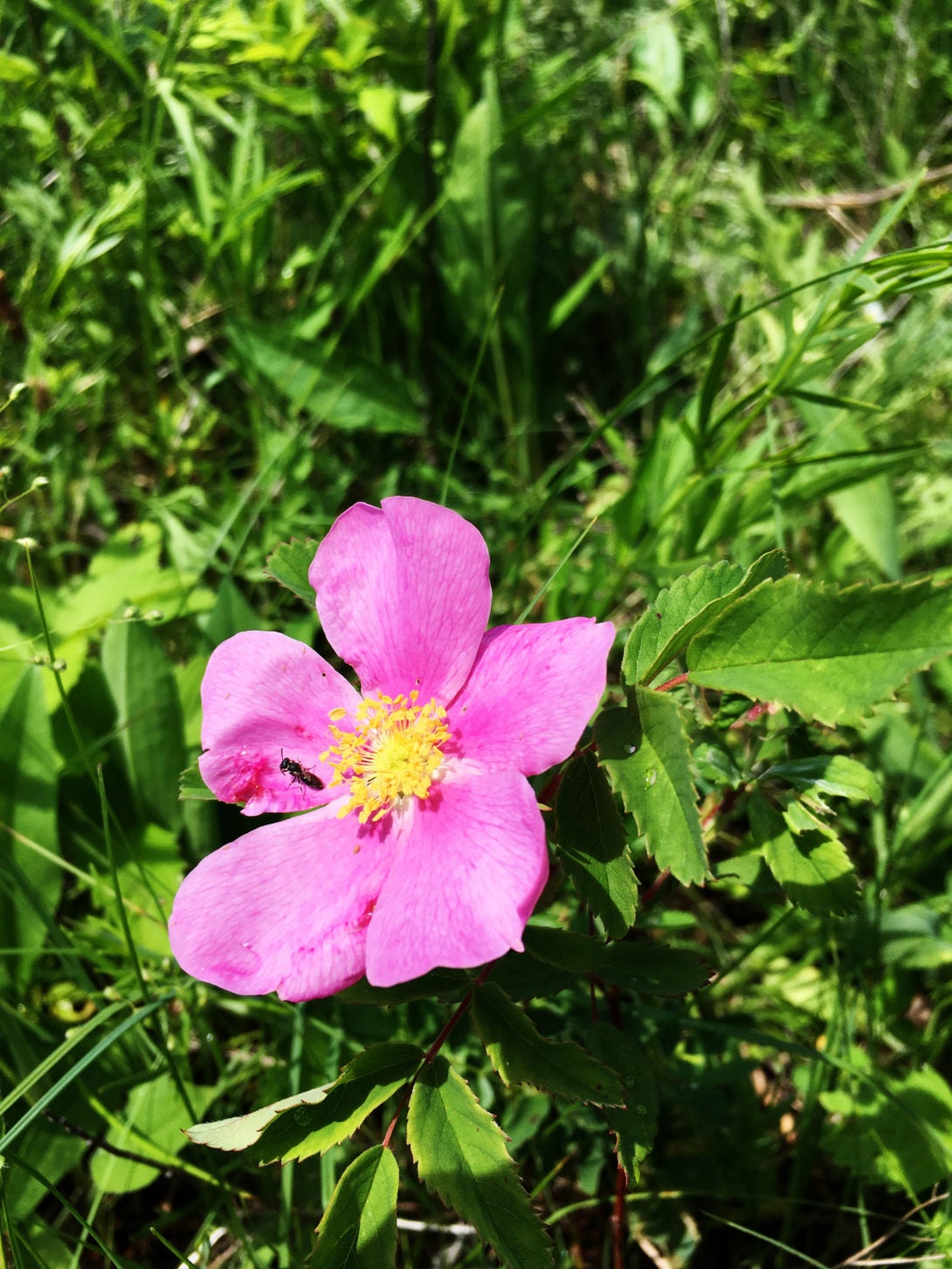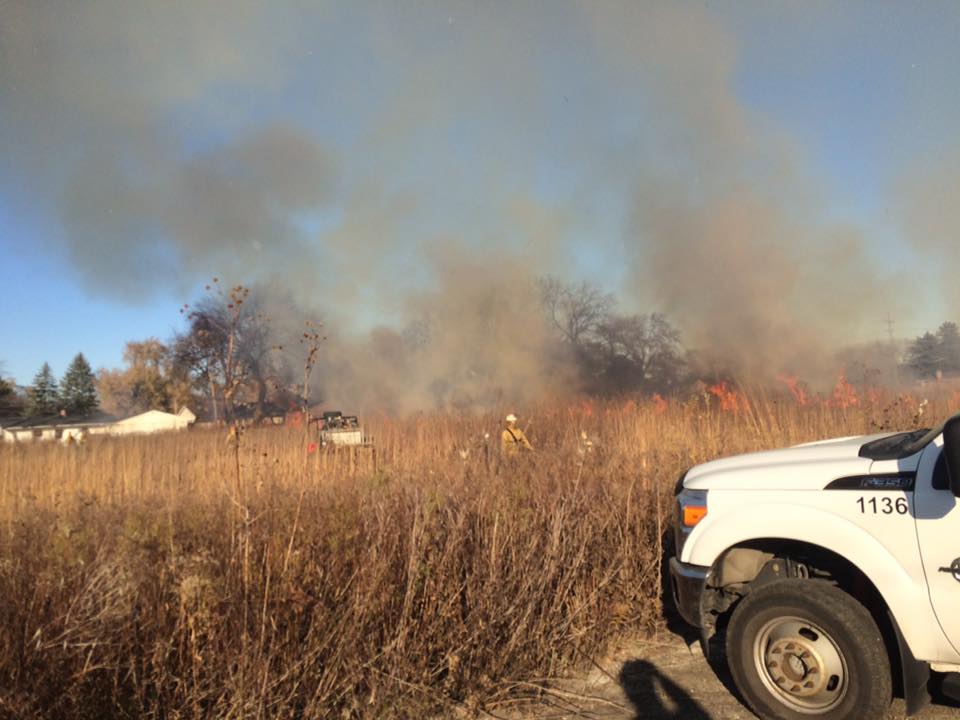Preserving the Prairie Community Heading link
Woodworth Prairie’s mission is to maintain populations of native prairie plant and animal species as a functioning ecosystem. A major focus of management is Revitalization. Revitalization focuses on reversing past and present anthropogenic abuse, on the complete removal of non-native species, regulating over-abundant native species and manipulating processes to mimic the patterns of those processes before the landscape was dominated by human economic activity.
Anthropogenic Abuse Heading link
-
Leftover Abuse
Natural areas are often used as dumping grounds. JWP was not an exception. In 2009 a volunteer removed slabs of concrete that had been bulldozed into the Milwaukee swale.
-
Edges
The quality of the vegetation is lower near the north and south fences.
-
Debris
One load of concrete removed from the Milwaukee Swale wetland in 2009 before being dumped. Andrew Athens did concrete removal with sledge and shovel.
Andrew Athens standing in the hole created by concrete removal in 2009. About 8 slabs approximately 4′ x 5′ were removed from the wetland with a sledge and loading of the pieces onto a cart and then to the dumpster.
Picking up debris comes naturally to many people. Hardly anyone would speak against it as an activity, but does it help native species?
Perhaps. The prairie does not currently have any reptile species that would use the debris as sunning perches. Debris deprives the ground of light and debris proves extra water to the ground adjacent to the debris. This encourages invasive vegetation, such as ragweed, rather than prairie plants.
-
Continuing Abuse
Plastic bags and fast food debris blow into the prairie regularly.
Types of Species Heading link

Living Species (non-native)
Goal: Control of non-native species
Woodworth Prairie wants only native prairie species on the site.
Living Species (native)
Environmental circumstances favor some species and hurt others. Fire suppression in particular favors woody plants over prairie vegetation. Humans have altered the environment and actions by stewards counteract those effects. A native plant, gray dogwood, needs a fair amount of control to keep the prairie from undergoing a natural process of succession into a shrub land.
Techniques of plant species removal
While not philosophically opposed to the use of herbicides, management of JWP tries to find ways to eliminate exotic species without using these powerful chemicals. The techniques include: pulling, cutting, digging, girdling and PROCESSES
For some species, herbicide is the preferred method. At JWP, reed canary grass is the most abundant exotic species. It and the following species are normally controlled with glyphosate; Lily-of-the-Valley, Smooth brome, Soapwort, and Daylily.
Interpretation Center (IC) Garden Heading link
The garden surrounding the IC has long served as a place where many of the species characteristics of black-soil prairie could be observed. Another purpose has been added. At least some of the prairie species that are rare in the prairie have been grown in the garden. Included are Geum triflorum, Krigia biflora, Sphenopholis obtusata, Viola pedatifida and others. Seeds from these garden plants will hopefully supplement the small populations of these species.
White tubes marked seedlings planted in the garden. Blooming Phlox pilosa was planted as seedlings in a prior year.
Processes Heading link
Learn about the processes that the Woodworth Prairie goes through.
Fire

Fire is a natural phenomenon which undoubtedly became more frequent after humans first occupied our area, but today humans put them out.
Water
People drain land for many reasons. Illinois was a wet place before ditching and tiling.
Grazing
Large grazers are gone, but cottontails and voles are abundant.
Material Inputs
Humans use many elements. Our use has increased amounts of metals and other elements in our environment and may be called eutrophication. Nitrogen deposition, from anthropogenic sources, has become a major factor in the eutrophication of terrestrial ecosystems near urban areas. Dry deposition of Nitrogen Oxides is an important source of anthropogenic ecosystem change, particularly near major highways.
Eutrophication
Traditionally, eutrophication has been used to describe algal blooms in lakes resulting from increased inputs of phosphorous or nitrogen. Humans have increased the concentration of many other elements as well. Iron, Fe, is an example. The amounts in soil have increased because of the widespread use of iron and its quick oxidation. Many other metals are much more available to plants and animals than they were hundreds of years ago. Metals are an essential part of many enzymes. We know little about which species are affected by increased metals.